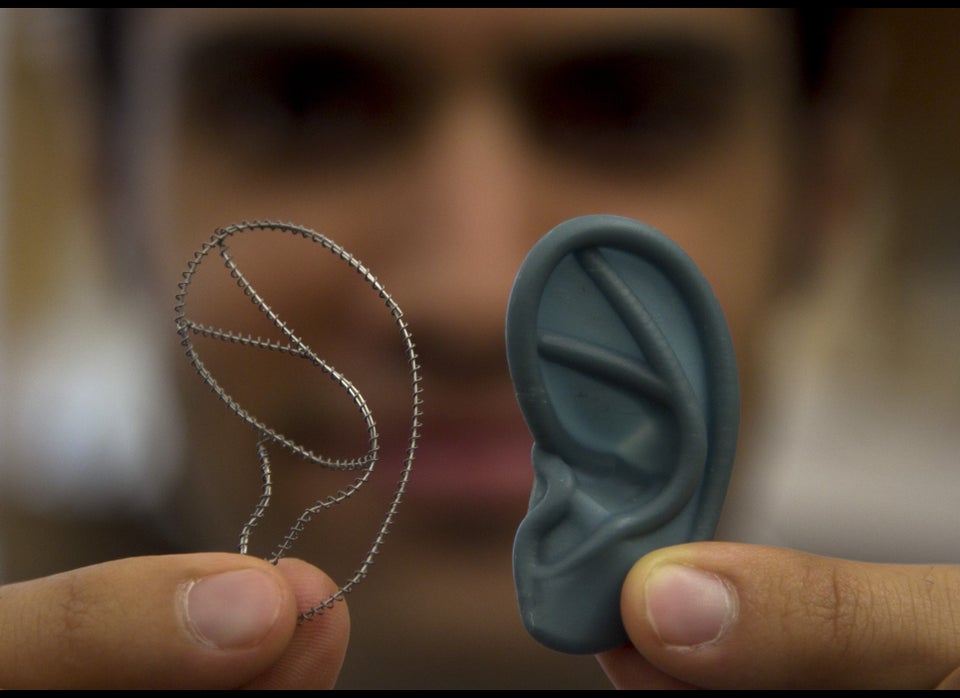
When William Shakespeare penned the line, "Friends, Romans, countrymen, lend me your ears," the famous playwright meant it in the most figurative sense.
But it seems researchers at Massachusetts General Hospital have taken it quite literally.
Scientists at the Laboratory for Tissue Engineering and Organ Fabrication there, working to develop reconstructive plastic surgery techniques for wounded veterans, have learned how to successfully grow new sets of ears.
"People have been working on this for 20 years," said Cathryn Sundback, director of the tissue engineering lab at the hospital, to the Associated Press. Until this point, however, the technique has been impractical.
New technology aims to change that. Now, bits of the patient's own collagen (the tissue that gives ears their rigidity) can be grown around a custom-shaped titanium substructure. The structure grows in an incubator for a couple weeks, writes the AP, then voila! -- a new ear, ready to be covered with skin and sewn into place.
To prove the viability of the tissue, researchers have attached the ears onto rats, (photos below) where they have remained healthy for extended amounts of time. The ears have not yet been approved by the FDA, but according to the AP, the lab expects to have approval in about a year.
PHOTOS of the ears:

